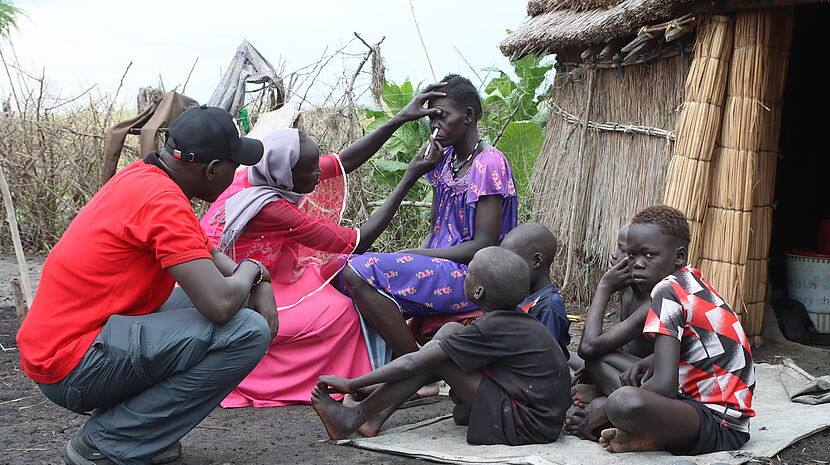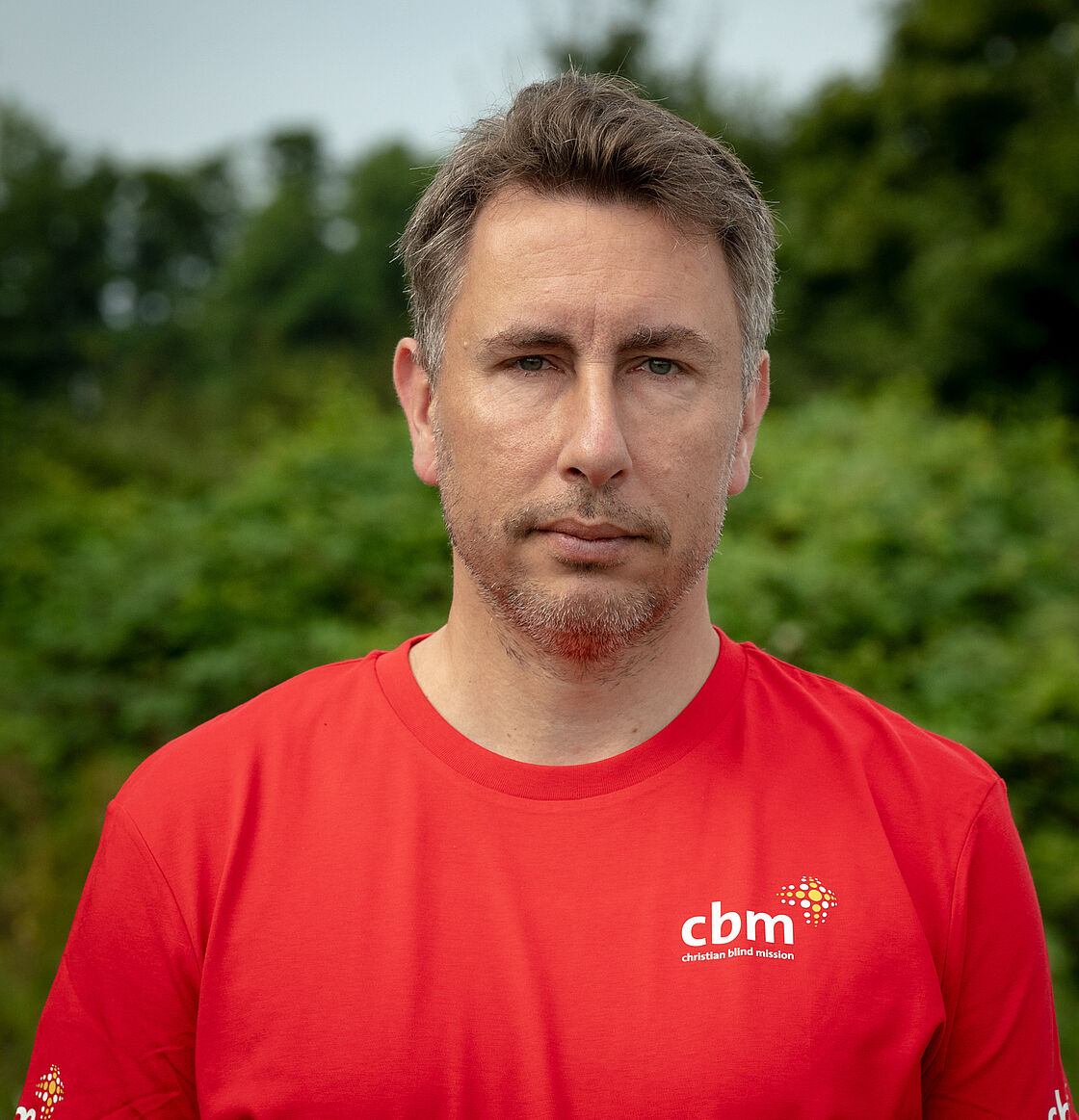Aid worker:
The most dangerous job in the world?

CBM Trachoma Programme Officer Samuel and case finder Anjelina examine a new trachoma patient in Rubkona District, South Sudan.
©CBM
An in-depth look at the dangers faced by aid workers in crisis areas like South Sudan, highlighting the struggles of delivering aid amid conflict and instability.
In a world where crises are intensifying and global aid is shrinking, the situation in South Sudan today stands out as particularly dire. With the ongoing conflict, rampant instability, and the devastating impact of natural disasters, South Sudan has become a land where safety is a distant memory and survival is a daily struggle. The consequences of these conditions are felt most acutely by those already vulnerable — persons with disabilities, those displaced from their homes, and those unable to access even the most basic neccesities.
As global funding for humanitarian aid dwindles, organisations like CBM face increasing challenges in their mission to provide life-saving support. Despite these challenges, CBM and its partner organisations work tirelessly to provide essential assistance to those most in need.
The risk though to humanitarian aid workers has never been greater.
Aid Worker Security Report 2024 reports that more aid workers died by violence in 2023 than in any previous year on record, with 280 fatalities reported in 33 countries. More than half of these deaths (163) were aid workers killed in the first three months of the conflict in Gaza, where CBM has education projects.
Ongoing civil and inter-communal violence and impunity in South Sudan, especially in Jonglei and Upper Nile states, resulted in 34 aid worker fatalities in 2023 and was the second biggest driver of last year’s unprecedented toll. Major conflict erupted in neighbouring Sudan in April 2023, leading to the deaths of 25 aid workers by the end of the year in attacks by various fighting forces and collateral violence.

©CBM
Tom van Herwijnen has spent years working for various aid organisations in Afghanistan and other conflict zones. At CBM, he is responsible for the security and worldwide protection of CBM employees. Tom recently visited South Sudan. In this interview, he shares his firsthand experiences of a country teetering on the edge, where aid workers have been left overwhelmed.
Mr van Herwijnen, you were recently in South Sudan. What did you experience?
Tom van Herwijnen: I experienced a country where nothing and nobody is safe. People who are supposed to ensure law and order, for example, the police and the military, have not been paid for months. In other words, people who carry a weapon have nothing to eat. That is extremely dangerous. Nobody is safe in this country - not even the employees of CBM or other aid organisations.
How exactly is CBM helping on the ground?
We support the eye departments of the hospitals and treat the people in the refugee camps. The country has been unstable and bankrupt since the civil war and its independence. In addition, massive flooding and sustained insecurity has driven many people into refugee [IDP] camps. This leads to catastrophic eye disease conditions - caused by flies, dirt and contaminated water. CBM employees like Samuel Lubari examine people's eyes and treat neglected tropical diseases like Trachoma to prevent visual impairment and blindness. Surviving in South Sudan is hard enough as it is. Imagine if they were also blind! It's a matter of life and death: if we don't help people, they will die - that's the reality.
But people are safe in the hospitals, aren't they?
I visited Rubkona Hospital on the border with Sudan, and the walls of the outpatient clinic were riddled with bullets. There was even an attack on the ambulance. I don't want to imagine how many people died back then.
What is your role at CBM?
My job is to ensure that the people who go to the project areas for CBM return home safely. This also includes crisis management: if there is an attack on a CBM employee in a project country or if someone is kidnapped, I am called - even at night. I don't think many people realise that those working for aid organisations are risking their lives. Every year, many employees of non-governmental organisations around the world die on aid missions.
How do you ensure the safety of employees?
All CBM buildings in high-risk areas have safe rooms, for example. They contain food, water, and much more so people can hibernate in there for a while. If there is unrest, our employees can take refuge there. We also organise regular training sessions, where staff learn how to behave at border crossings and when talking to the military, among other things. They also practise how to react in the event of kidnapping or what to do if they come under fire.
What do you want from governments and donors?
We want our work recognised, and this is also expressed in financial support. In times of globalisation, helping and stabilising crisis areas means strengthening the global security situation. Cutting the budget for humanitarian aid and development cooperation in these times is the wrong signal.